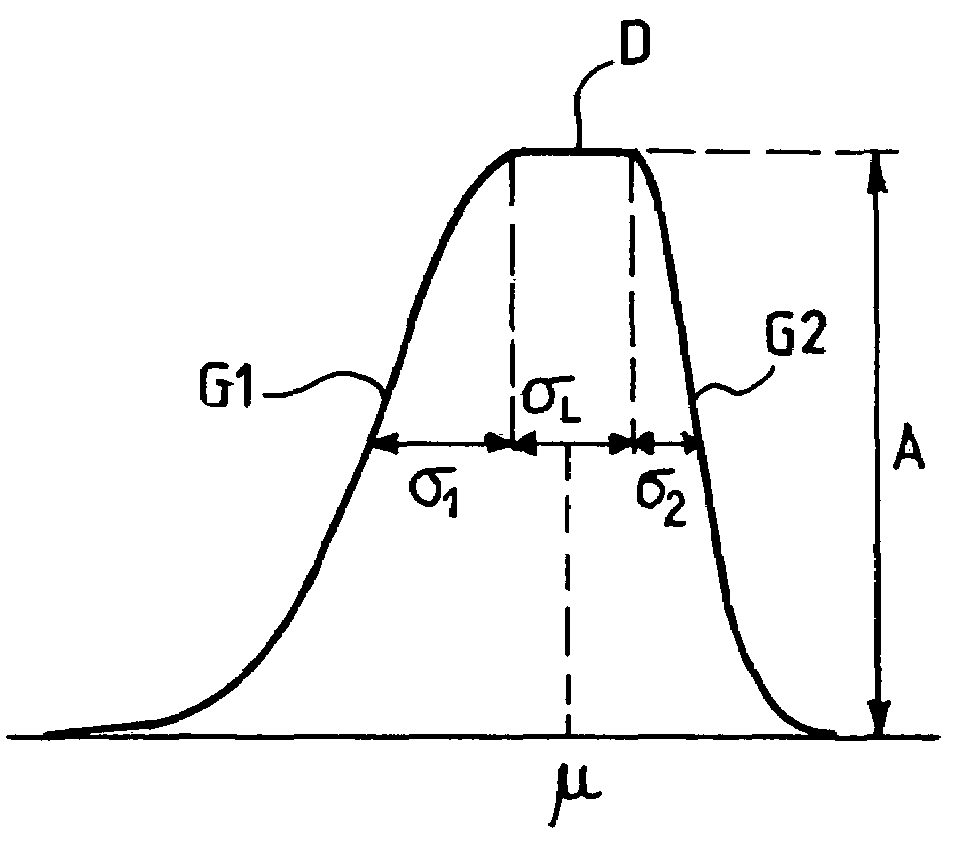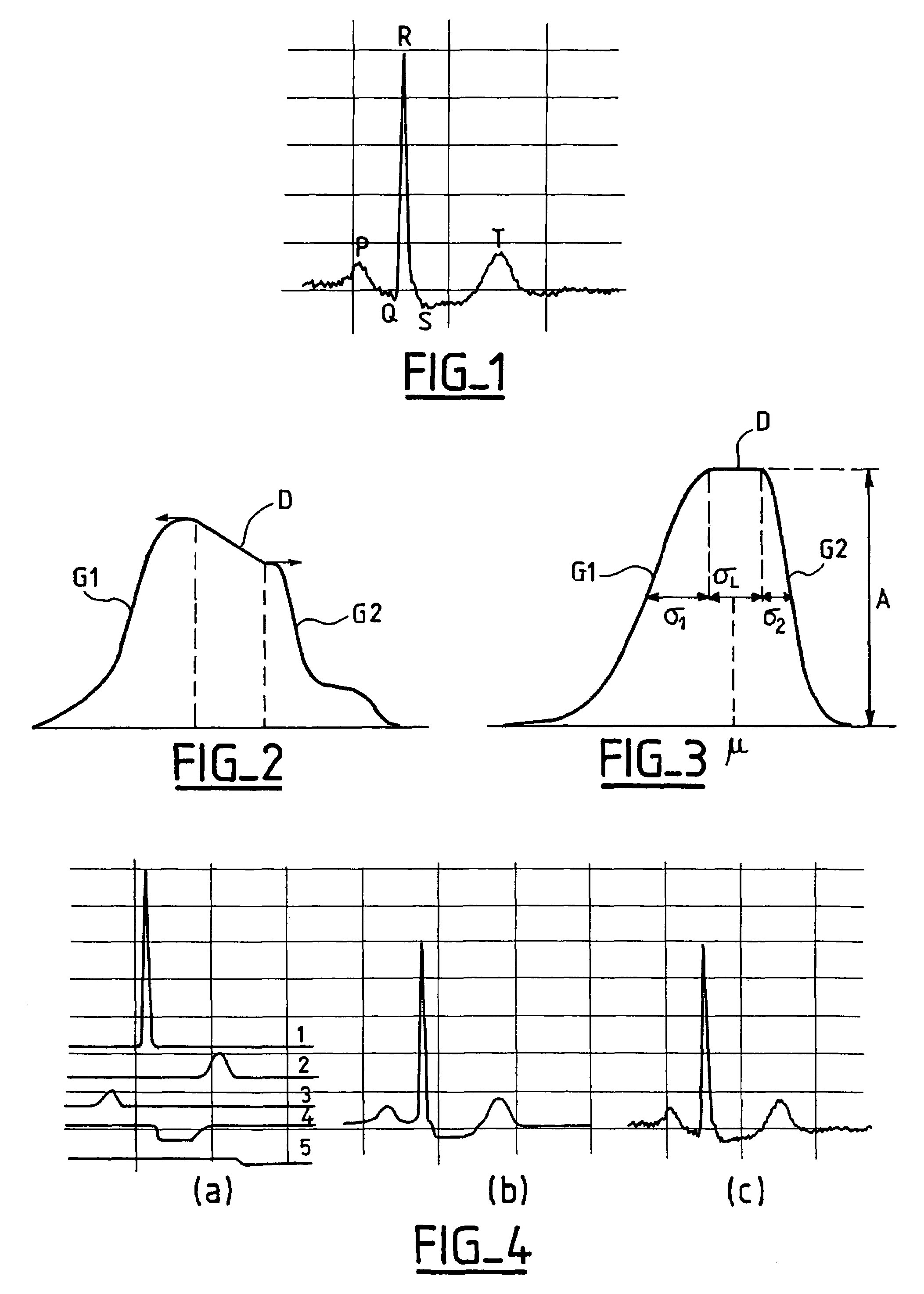Device for analysis of a signal, in particular a physiological signal such as an ECG signal
a signal analysis and physiological technology, applied in the field of data analysis, can solve the problems of large data processing means, large error rate in signal analysis, and analysis of holter recording, etc., and achieve the effect of reducing the disadvantages of analysis techniques
- Summary
- Abstract
- Description
- Claims
- Application Information
AI Technical Summary
Benefits of technology
Problems solved by technology
Method used
Image
Examples
Embodiment Construction
[0033]The origin of the invention lies in the creation of a fast and reliable algorithm that can be implemented with limited data-processing resources by operating the modeling of the physiological signal by a decomposition in “bumps,” a bump being a well-known mathematical concept that, until now, has never proposed to be applicable to the analysis of a physiological signal.
[0034]A bump, as illustrated in FIG. 2, is a monotonic function that is parameterized such that it is defined by three successive intervals, a first increasing parameterized function G1, an affine function D, and a second decreasing parameterized function G2. According to the invention, the device for analyzing seeks to compose a set of bumps such that the graph of the sum of these bumps is as similar as possible to a known monodimensional signal. The optimization of the parameters of each bump is operated by any suitable mathematical method making it possible to obtain a graph as close as possible to the origin...
PUM
 Login to View More
Login to View More Abstract
Description
Claims
Application Information
 Login to View More
Login to View More - R&D
- Intellectual Property
- Life Sciences
- Materials
- Tech Scout
- Unparalleled Data Quality
- Higher Quality Content
- 60% Fewer Hallucinations
Browse by: Latest US Patents, China's latest patents, Technical Efficacy Thesaurus, Application Domain, Technology Topic, Popular Technical Reports.
© 2025 PatSnap. All rights reserved.Legal|Privacy policy|Modern Slavery Act Transparency Statement|Sitemap|About US| Contact US: help@patsnap.com


